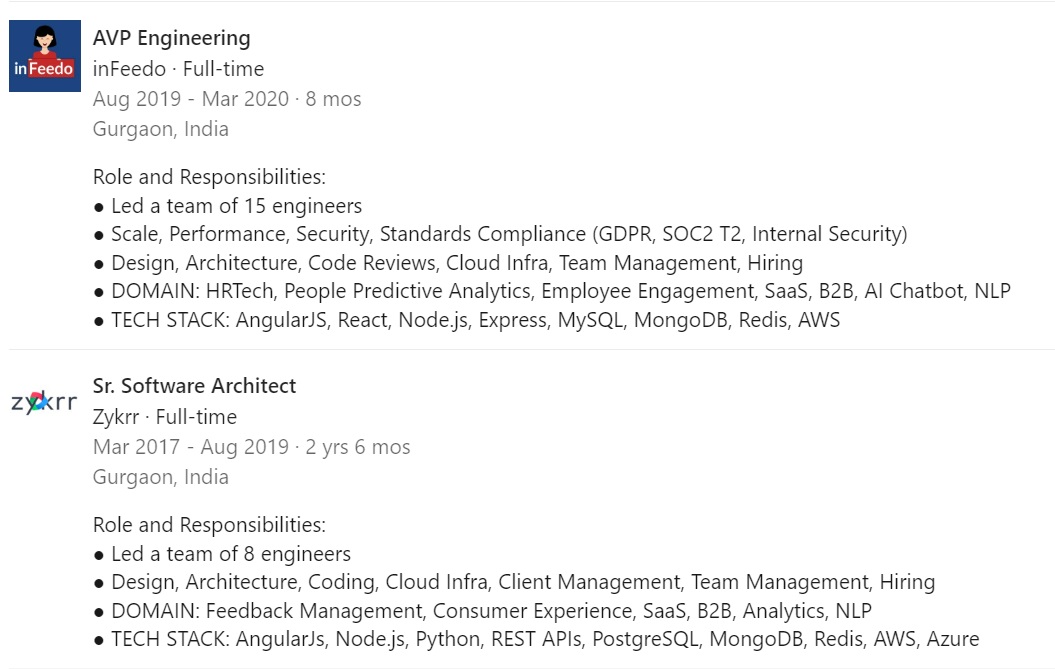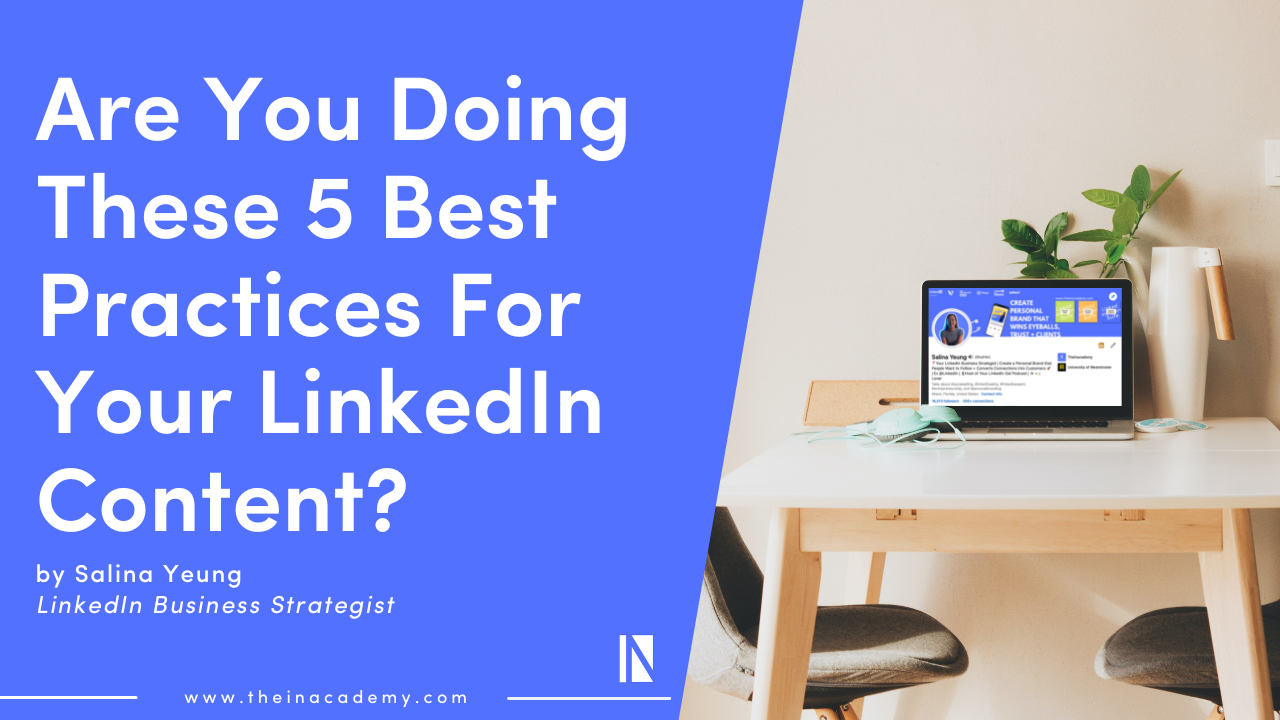When it comes to navigating the professional world today, your LinkedIn profile can be your best asset. Whether you're job hunting, looking to network, or wanting to build your personal brand, how you showcase your experiences matters significantly. But should you list every single job you’ve held or only select highlights? This blog post will explore best practices for highlighting your career history on LinkedIn, ensuring you make the right impression.
The Importance of a Strong LinkedIn Profile

Having a robust LinkedIn profile is more essential than ever in today's digital age. It serves not just as an online resume but as a dynamic tool for career advancement and networking. Here are some key reasons why a strong LinkedIn profile matters:
- First Impressions Count: Recruiters and hiring managers often turn to LinkedIn to gauge your professional persona. A well-crafted profile can be the difference between landing an interview and being passed over.
- Showcasing Your Unique Brand: Your profile allows you to articulate your personal brand. This is your chance to highlight what makes you unique, including your skills, achievements, and professional passions.
- Enhanced Networking Opportunities: A strong presence can attract connections that you might never meet otherwise. Engaging with your network can open doors to collaborations, referrals, and job opportunities.
- SEO Benefits: LinkedIn is an influential platform for search engine optimization. A profile optimized with relevant keywords can increase your visibility, making it easier for potential employers to find you.
- Learning and Development: LinkedIn offers valuable resources including courses, articles, and discussions. A proactive profile can position you as a thought leader in your field, keeping you updated and informed.
Each of these aspects highlights the importance of spending time on your LinkedIn profile. It’s not just about listing job titles; it’s about telling your career story in a way that resonates with your audience.
Deciding What to Include in Your Experience Section

When it comes to your LinkedIn profile, the experience section is one of the most crucial areas that potential employers, collaborators, and networking connections pay attention to. Therefore, it’s essential to be strategic about what you include here. The goal is to showcase relevant experiences that help you stand out and reflect your professional journey authentically.
First off, think about the roles that are most pertinent to your career goals. Here’s a quick checklist to help you decide:
- Relevance: Does this experience relate to roles you're targeting?
- Impact: Did you achieve notable results or milestones?
- Skills: Did you develop any critical skills that are in demand?
- Representation: Does this experience demonstrate your professional growth over time?
It’s also crucial to remember that quality trumps quantity. Instead of listing every job you’ve ever held, focus on the positions that really highlight your strengths. For instance, if you held multiple roles at the same company, consider summarizing them or emphasizing the positions where you learned the most or contributed significantly.
Incorporating volunteer experiences or freelance projects can also add depth to your profile, especially if they align with your career aspirations. Ultimately, this section should tell a cohesive story about who you are as a professional.
Best Practices for Highlighting Key Experiences
Now that you've determined the experiences you want to include, how do you highlight them effectively? Here are some best practices to elevate this section of your LinkedIn profile:
- Use Action-Oriented Language: Start bullet points with action verbs like "Led," "Developed," or "Implemented" to convey a sense of agency and achievement.
- Quantify Achievements: Whenever possible, include metrics to illustrate your impact. For example, “Increased sales by 30% within one year” is much stronger than just saying you contributed to sales.
- Be Specific: Instead of vague descriptions, provide concrete examples of your contributions. Detailed narratives help paint a clearer picture of your professional capabilities.
- Use Keywords Wisely: Tailor your experience section with industry-specific keywords that recruiters are likely to search for, thus improving your chances of showing up in relevant searches.
- Keep It Up-to-Date: Regularly review and update your experience section to reflect new roles and accomplishments. This shows that you are active and engaged in your career.
With these best practices in mind, you’ll make a compelling case for your professional background that resonates well with your audience, setting you apart in a somewhat crowded LinkedIn landscape.
5. Tailoring Your Experience for Your Target Audience
When it comes to your LinkedIn profile, one size definitely doesn't fit all. Tailoring your experience for your target audience is crucial if you want to stand out and attract the right connections or job opportunities. It all starts with understanding who you are trying to reach. Are you looking to connect with potential employers, industry peers, or clients? Each group may value different aspects of your experience.
Here are some tips to help you customize your LinkedIn experience section:
- Identify Your Audience: Consider who you want to view your profile. Is it recruiters in your field, potential clients, or fellow professionals? Knowing your audience helps shape how you present your experience.
- Use Relevant Keywords: Incorporate industry-specific keywords that are likely to resonate with your target audience. This not only makes your profile more discoverable but also establishes you as someone knowledgeable in your field.
- Highlight Relevant Roles: You don’t need to list every job you’ve ever had. Focus on the roles that align with your current career goals and that demonstrate your skills and achievements.
- Showcase Key Achievements: Instead of just listing responsibilities, emphasize accomplishments that your target audience will find impressive. Quantify your results whenever possible.
- Adjust Your Tone: Depending on your audience, tweak the language and tone of your descriptions. A more technical field might appreciate jargon, while a creative environment could call for a lighter, more personable approach.
By thoughtfully tailoring your experience section, you can make a powerful impression and increase your chances of achieving your professional goals.
6. Common Mistakes to Avoid
While crafting your LinkedIn profile, it's easy to overlook certain details that could affect how you're perceived online. Avoid these common mistakes to ensure your profile is polished and professional:
- Neglecting the Headline: Your headline is one of the first things people see, so don’t just settle for the default job title. Create a catchy and descriptive headline that summarizes your expertise and career aspirations.
- Being Overly Vague: Don't be too generic. Your experience section should be detailed and specific enough to convey what you actually did in each role.
- Ignoring Recommendations: Recommendations lend credibility to your profile. Failing to request or provide them can leave your profile looking bare. A well-rounded LinkedIn profile includes positive endorsements from colleagues or supervisors.
- Outdated Information: Ensure your experience and education sections are current. Employers can be wary of profiles that seem stale or haven’t been updated in a while.
- Too Much Jargon: While it’s important to use industry-specific language, avoid overwhelming your readers with too much jargon. Remember, clarity is key!
Avoiding these pitfalls will help you create a LinkedIn profile that not only showcases your career history but also effectively represents your personal brand. Investing time to refine your profile can lead to exciting new opportunities!
Should You List All Your Experiences on LinkedIn? Best Practices for Highlighting Your Career History
LinkedIn has become the go-to platform for professionals to showcase their career history, network, and seek new opportunities. However, the decision of whether to list all your experiences can be tricky. Here are some best practices to consider:
- Quality Over Quantity: Instead of listing every single job, focus on those that are most relevant to your current career goals. Highlight positions where you gained significant skills or accomplishments.
- Tailor Your Experience: Customize your experience section based on the industry you are targeting. Use keywords and phrases relevant to your field that employers are searching for.
- Showcase Achievements: Rather than simply listing job duties, emphasize your achievements. Use metrics to quantify your contributions, such as "increased sales by 30%" or "managed a team of 10."
- Consider Relevance: If a position from years ago doesn’t align with your current professional narrative, you might consider omitting it. Focus on the last 10-15 years of your career, unless earlier roles are exceptionally notable.
- Utilize Sections Wisely: LinkedIn offers various sections such as Projects, Publications, and Volunteering. Use these to provide a more comprehensive picture of your career rather than cramming everything into your experience section.
Ultimately, the goal of your LinkedIn profile should be to present a cohesive narrative of your professional journey that attracts potential employers and collaborators. By prioritizing meaningful experiences and measurable achievements, you can create a compelling profile without overwhelming your audience with unnecessary details.
In conclusion, strategically selecting and presenting your career experiences on LinkedIn is vital for effectively showcasing your professional narrative, enhancing your visibility, and improving your career prospects.
 admin
admin








